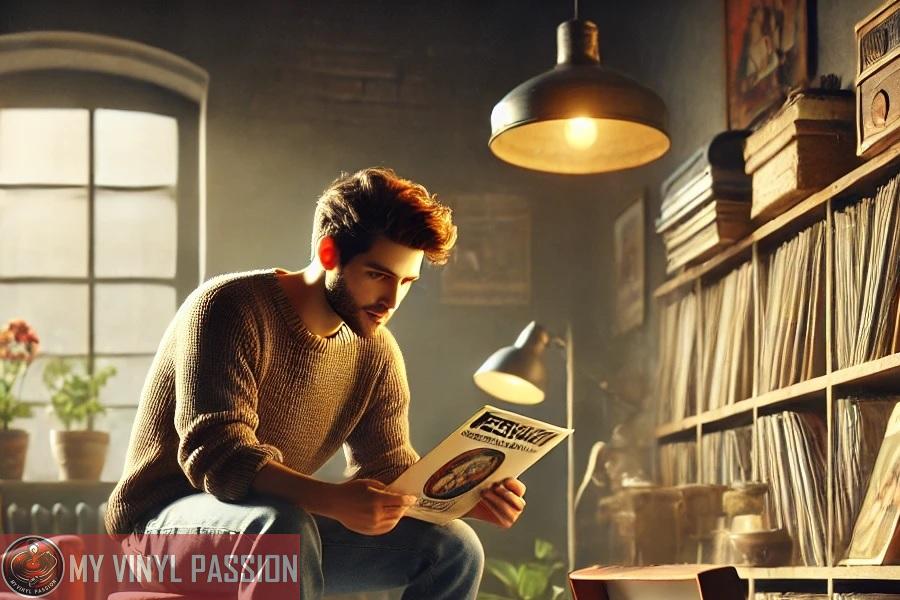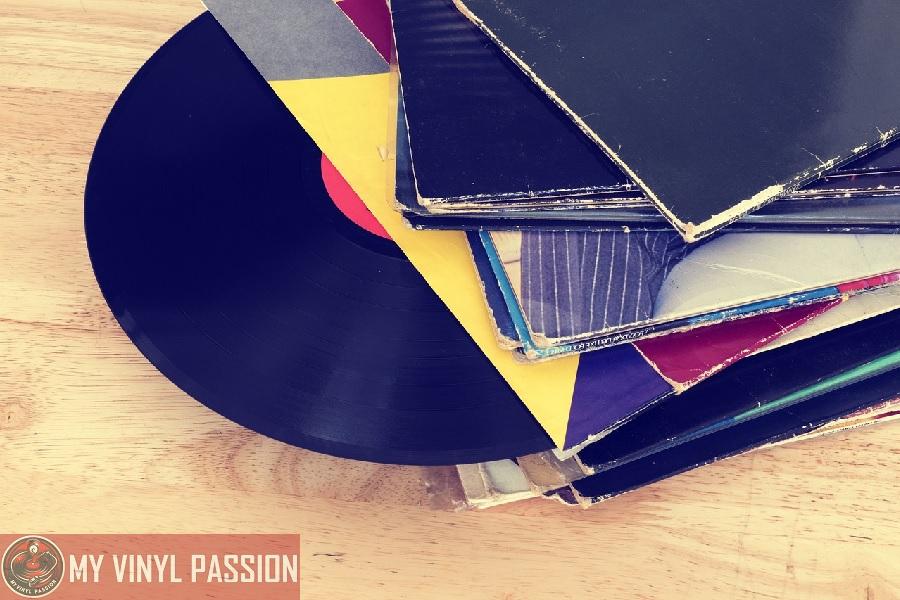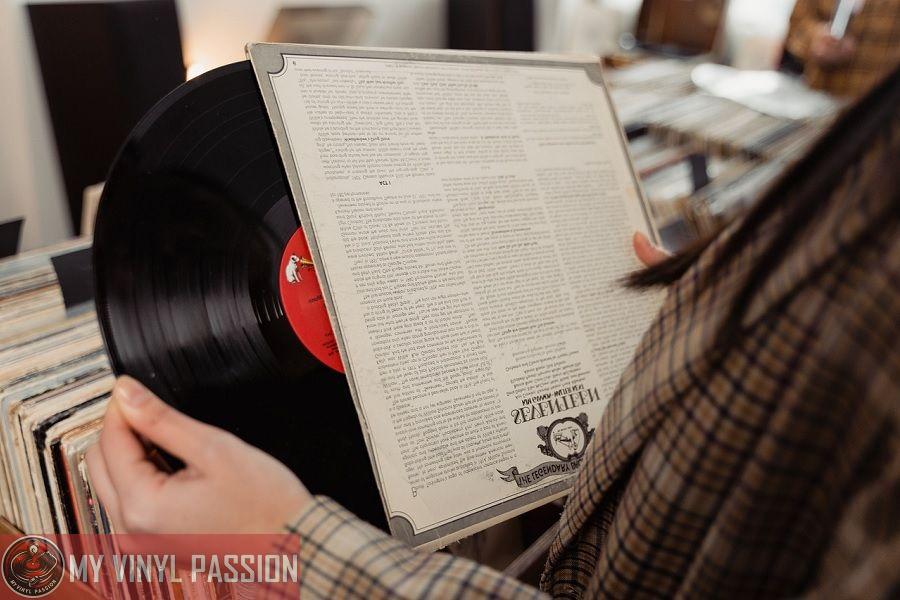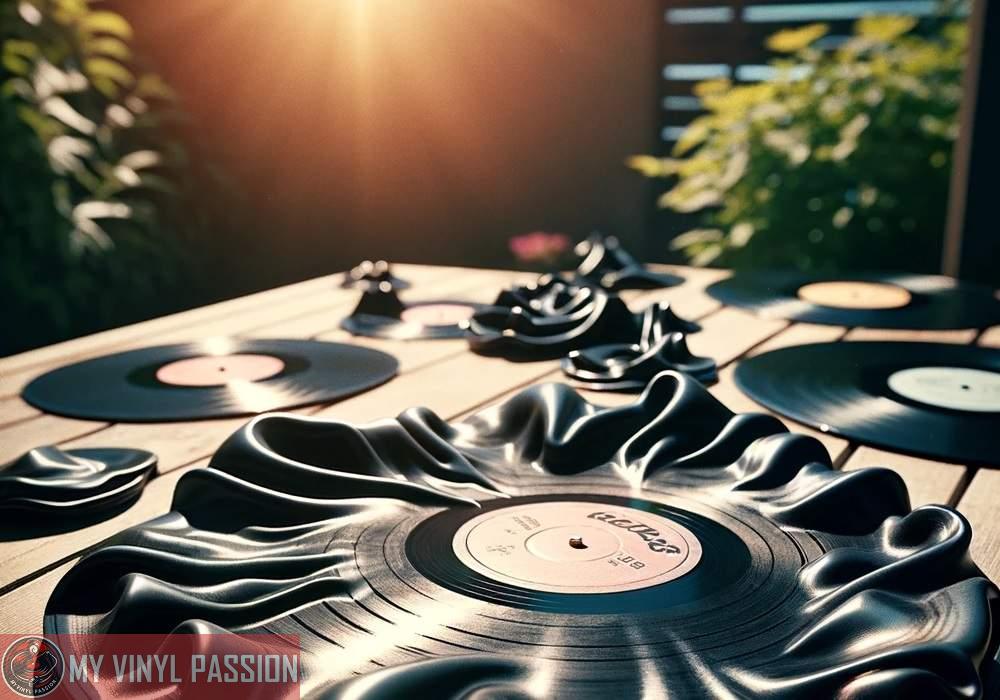The warm crackle of a vinyl record spinning on a turntable has an undeniably nostalgic appeal.
While the music industry has embraced digital platforms and streaming services, a growing number of music enthusiasts are exploring the world of vinyl records, seeking to find a deeper connection with the artists and genres that move them.
As you delve into the vinyl realm, you might find yourself asking the question – what type of music sounds better on this classic medium?
In Summary
Vinyl provides a distinctive warmth and depth to music
Certain genres and artists particularly benefit from vinyl’s tonal qualities
Understanding the nuances of vinyl can enhance your listening experience
The answer lies in the richness and character of the sound produced by vinyl records.
The analog nature of vinyl gives it a distinct warmth and depth, which can enhance the listener’s experience of certain music genres and artists.
The unique tonal qualities of vinyl recordings bring out the nuances in a way that may be missing from their digitally compressed counterparts.
So, which genres and artists truly shine on vinyl?
To better understand the magic that lends vinyl its allure, it’s important to be aware of the key differences between vinyl and digital sound quality, as well as the essential equipment needed to enjoy your records to their full potential.
By appreciating the vinyl listening experience and building a curated record collection, you’ll be well on your way to discovering a deeper connection to the music that moves you.
The Hidden Warmth and Depth of Vinyl Music
When you listen to music on vinyl records, you’ll notice a distinct warmth and depth that are often missing in digital formats. This warmth and depth are a result of the analog nature of vinyl records, which capture the full waveform of the original sound, including all its subtleties.
One factor contributing to the warmth of vinyl music is its frequency response. Vinyl records are capable of delivering a more natural and smooth sound than their digital counterparts.
The grooves on a vinyl record preserve the nuances of the original recording, allowing for a fuller, richer sound. In contrast, digital formats compress the audio, which can result in a loss of detail and a less immersive listening experience.
The presence of pops and crackle on vinyl adds a layer of depth and raw texture to the music. These imperfections are the result of the physical contact between the stylus and the record, and they give vinyl its unique character.
Many music lovers appreciate this quality, as it creates a more intimate connection with the music and evokes a sense of nostalgia.
To appreciate the difference in sound quality between vinyl and digital formats, consider the following comparison:
| Vinyl | Digital | |
|---|---|---|
| Sound | Natural, smooth, organic | Compressed, potentially less detailed |
| Depth | Rich, textured | Flat, potentially less dynamic |
| Warmth | Authentic, warm | Clean, potentially more sterile |
In summary, the warmth and depth of vinyl music come from its unique analog qualities that provide a more natural, dynamic, and engaging listening experience. This is why many music lovers continue to cherish vinyl records as a must-have item in their music collections.
If you haven’t explored the world of vinyl yet, put on a record and experience the warm, vibrant sound that only vinyl can provide.
Differences Between Vinyl and Digital Sound Quality
When comparing the sound quality of vinyl records and digital formats, it is important to understand the key differences between the two mediums. Vinyl records rely on a physical, analog format, while most digital formats, such as CD, MP3, and lossless files, utilize digital encoding and compression.
One of the most notable differences between vinyl and digital sound quality is the presence of hisses and pops in vinyl records. As a result of the stylus moving through the record grooves, vinyl records inherently introduce some level of background noise.
This can be viewed as an endearing quality by some listeners, adding a nostalgic charm to the music. Digital formats, however, offer a much cleaner listening experience with minimal to no background noise.
In terms of dynamic range, vinyl records typically have a more limited range compared to digital formats. The dynamic range represents the difference between the quietest and loudest sounds in a recording.
CDs and digital formats offer a wider dynamic range, allowing for more intricate details and subtleties in the music to be heard.
Digital formats come with varying levels of compression. Formats like MP3s may have noticeable compression artifacts, especially at lower bit rates, which can lead to a loss of audio quality.
On the other hand, lossless digital formats, such as FLAC and ALAC, deliver the full quality of the original recording without any loss of information.
Regarding distortion, vinyl records can suffer from a phenomenon called inner groove distortion due to the stylus tracing the grooves more tightly as it approaches the center of the record. Digital formats do not have this issue, as they reproduce sound consistently across the entire length of a recording.
Here is a quick comparison of key aspects for vinyl and digital sound quality:
| Aspect | Vinyl Record | Digital Format |
|---|---|---|
| Hisses & Pops | Yes | No |
| Dynamic Range | Limited | Wider |
| Compression | None | Varies by format |
| Distortion | Inner Groove | Consistent |
Ultimately, the choice between vinyl and digital formats will come down to your personal preferences and priorities. Some individuals may find the tactile nature and warmth of vinyl records more appealing, while others may prefer the convenience and clarity of digital formats.
As you explore your preferences, you can build a music collection that best suits your listening style.
Essential Equipment for Enjoying Vinyl Music
To fully appreciate vinyl music, you need to assemble the right set of equipment. The key components include a turntable, a phono stage, a cartridge, speakers, and good quality cables. Let’s take a closer look at each element and understand their significance in the vinyl listening experience.
Turntable: Selecting a turntable is the first and most crucial step in setting up your vinyl music system. Turntables come in various styles and price ranges. While budget turntables are available, you’ll want to invest in a quality turntable for the best sound experience. Make sure the turntable has a solid build, good-quality materials, and comes from a reputable brand.
Phono Stage: The phono stage is an essential component that amplifies the signal from the turntable to a level suitable for playback through your hi-fi system. Some turntables come with a built-in phono stage, while others require a standalone phono stage. It’s important to invest in a good-quality phono stage to ensure clear and precise amplification.
Cartridge: The cartridge plays a crucial role in vinyl music playback, as it houses the needle that reads the grooves on the vinyl record. There are two main types of cartridges: moving magnet (MM) and moving coil (MC). Both have their unique characteristics, but MM cartridges are generally more budget-friendly and easier to replace.
Speakers: Your choice of speakers will significantly impact the overall sound quality of your vinyl setup. Ideally, you should opt for a pair of hi-fi speakers capable of delivering clear, accurate, and room-filling sound. Consider your room size and layout when selecting speakers, as this will influence the positioning and overall sound balance.
Cables: High-quality cables are an often overlooked aspect of a vinyl music setup. Good cables will ensure a reliable connection, minimize signal loss, and reduce interference. Be sure to invest in quality speaker cables, RCA cables, and power cords to connect your equipment.
Remember: Augmenting your equipment can enhance the playback quality of your vinyl records. However, you don’t need to break the bank – there are plenty of budget-friendly options that can deliver impressive results. Take your time researching the various components available and choose the ones that best suit your musical preferences and budget. Enjoy the rich, warm sound that only vinyl can provide!
Key Genres and Artists That Shine on Vinyl
When it comes to the vinyl experience, some genres and artists seem to shine brighter than others. The charm of vinyl lies in its warm sound and the tactile interaction it offers. As a listener, you can revel in the nostalgia and immerse yourself in the music.
As you explore the world of vinyl, consider these standout genres and artists.
Jazz is a genre that truly comes to life on vinyl, owing to its intricate harmonies, lively improvisations, and wide dynamic range. Vinyl captures the subtleties and nuances that digital formats might miss. For example, the revolutionary album Kind of Blue by Miles Davis showcases vinyl’s prowess in reproducing the delicate details that make this iconic work so timeless.
Classic rock and blues also benefit from the warmth and depth that vinyl has to offer. The classic rock era was a time when analog recording techniques were prevalent, and the music was often designed with vinyl records in mind. This is when legendary albums like Pink Floyd‘s Dark Side of the Moon and Rolling Stones‘ timeless works were released. Listening to these masterpieces on vinyl takes you back to the time when they debuted and made history.
Soul is another genre that excels on vinyl. The rich, emotional vocals and smooth melodies come together in a harmony of sound and warmth that vinyl provides. Artists such as Jack White and his various projects, including The White Stripes, are perfect examples of modern soul with a vintage vibe that sounds incredible on vinyl.
Finally, punk music, with its raw and energetic style, gains an added dimension on vinyl. As punk has always been about challenging traditions and pushing boundaries, the physical experience of putting on a punk record and listening intently to the music is particularly fitting. Power chords, scorching leads, and dynamic drumming come to life on the likes of Lubomyr Melnyk‘s records, making punk vinyl a must-have for any fan.
While all music has the potential to sound great on vinyl, certain genres and artists shine a little bit brighter on this timeless format.
Delve into records by the likes of Miles Davis, Pink Floyd, Rolling Stones, Jack White, and Lubomyr Melnyk across genres such as jazz, classic rock, blues, punk, and soul, and experience the richness and depth that vinyl can bring to your listening experience.
Understanding the Vinyl Listening Experience
As a music fan, it’s important to recognize the unique experience that vinyl albums offer. The sensation of listening to your favorite records on a turntable is more than just about the sound quality – it’s also an intimate and tactile experience.
When it comes to fidelity, many argue that vinyl records offer a warmer and richer sound compared to their digital counterparts. This is due to the analog nature of vinyl, which captures the audio waves of the original recording without any loss in quality.
The distinct “crackles” and “pops” that you may hear when playing a vinyl album are actually a result of the physical process involved in creating the grooves on the disc. These imperfections can add a nostalgic and authentic feeling to your listening experience.
Here are some elements that contribute to the appeal of vinyl:
- Artwork: Album covers are often considered a crucial aspect of the vinyl collection experience. These large, colorful designs can serve as the perfect backdrop for a music fan’s living space, adding a personal touch and showing off your favorite albums.
- Physicality: There’s something satisfying about flipping through a stack of records, pulling one out, and manually placing it on your turntable. It’s a tactile and intimate interaction with your music that is often lost in the digital world.
- Exclusivity: While digital streaming services offer millions of songs at your fingertips, vinyl albums can be harder to come by, making the act of owning, collecting, and sharing records a unique and gratifying pursuit.
Though vinyl has its advantages, it’s essential to consider some limitations as well. Records are susceptible to wear and tear, which can affect sound quality over time, and they often require special care to keep them in good condition.
Additionally, building a vinyl collection can be an expensive endeavor, both in terms of purchasing records and investing in a quality audio setup.
If you’re a music fan looking to appreciate a different listening experience, diving into the world of vinyl albums might be the perfect way to enhance your enjoyment of music.
By understanding the unique aspects of vinyl records, both in terms of sound and the physical experience, you’ll be well on your way to getting the most out of your vinyl collection.
Why Some Prefer Vinyl Over CDs and Streaming Services
As you delve into the world of music, you will undoubtedly encounter those who swear by vinyl records, claiming they offer a warmth and depth of sound that’s unmatched in today’s digital world.
While CDs and streaming services are more convenient and provide expansive access to an array of musical genres and artists, there are several reasons why some listeners still prefer the tactile experience of vinyl.
Firstly, vinyl records often display a richer and warmer sound compared to their digital counterparts. This sonic distinction is due to the analog nature of vinyl, where the grooves in the record directly correlate with the sound waves of the music.
CDs and streaming services, on the other hand, represent music in a digital format, which can cause a loss of detail during the conversion process, leaving some listeners dissatisfied.
Moreover, vinyl enthusiasts find a certain charm in the inherent imperfections of the format. Surface noise and slight distortions can imbue the music with a sense of nostalgia and character that’s absent from the clinical precision found in digital audio. These imperfections also remind us of the physicality of the medium – every needle’s touch and the pressure of the stylus on the grooves matter to the sound produced.
Another factor that factors into the preference for vinyl is the artwork and packaging that accompany actual records. Album covers, liner notes, and gatefold sleeves add visual and tactile layers to the listening experience, allowing the listener to engage more intimately with the music.
In contrast, CD packaging and streaming service visuals tend to be less immersive – beholden to smaller formats and confined to digital thumbnails.
Consider the following comparison table, which lays out some key differences between the three formats:
| Format | Sound Quality | Artwork & Packaging | Convenience | Physical Connection |
|---|---|---|---|---|
| Vinyl | Warm & Rich | Engaging & Immersive | Low | High |
| CD | Clear & Crisp | Moderate | Moderate | Moderate |
| Streaming | Adaptive (based on connection) | Minimal | High | Low |
In the end, personal preferences and priorities shape your musical journey as you explore various formats. You may appreciate the convenience and extensive library of streaming services, but also long for the tangible connection that vinyl records offer.
By understanding why some people prefer vinyl, you can make more informed decisions about how you want to experience your favorite tunes.
Guide to Building a Record Collection
Building a record collection can be a rewarding experience, as it allows you to explore the richness of various genres and truly appreciate the analogue sound. This guide will help you start your journey to building an impressive record collection that matches your taste in music.
Choosing Your Genres
While vinyl records may not cater to every single genre, they do offer excellent sound quality for certain types of music. Here are a few genres that tend to sound better on vinyl:
- Jazz
- Classical
- Blues
- Folk
- Rock
Feel free to explore other genres as well, but these may be a good starting point to build your collection.
Selecting Record Players
The most essential part of your setup is your record player. Investing in a quality turntable is vital for ensuring that your vinyl records are played at their full potential. Here are a few vital features to consider when selecting a turntable:
- Drive: Look for turntables with either direct-drive or belt-drive, as these provide better speed stability.
- Cartridge: Opt for a quality cartridge, as it significantly affects overall sound quality.
- Build: Sturdier turntables tend to offer better sound quality due to reduced vibrations.
Analog Sound Setup
Surrounding your record player with quality components will ensure a more immersive listening experience. Consider investing in excellent speakers, amplifiers, and preamps that complement your turntable and records.
Selecting Records for Your Collection
The fun part comes when you start to choose records to add to your collection. Here are some tips for selecting the best records for your collection:
- Mastering: Look for albums that use analog mastering, which maintains a more natural sound compared to digital mastering.
- Condition: Purchasing records in good condition is essential, as damaged records can negatively affect the audio playback.
- Pressings: Look for pressings from trusted labels to guarantee quality sound.
Additionally, don’t hesitate to explore online forums, video reviews, and conversations with fellow vinyl enthusiasts to discover new recommendations and hidden gems.
By following these tips, you will be well on your way to building a record collection that showcases the incredible richness of vinyl’s analogue sound. Enjoy the journey and make sure to take the time to appreciate each addition to your collection.
Frequently Asked Questions
What factors contribute to vinyl’s sound quality?
Several factors contribute to the distinct sound quality of vinyl records. These include the grooves etched into the vinyl, the stylus used for playback, and the mastering process. The analog nature of vinyl allows for a warmer, more engaging sound compared to digital formats, particularly in the mid and low frequencies.
How does vinyl compare to digital audio?
Vinyl and digital audio have their unique characteristics. Vinyl records have an analog sound with a more natural, textured quality, while digital audio provides clarity and precision. Many listeners appreciate the organic, authentic sound of vinyl, while others may prefer the convenience and consistent quality of digital audio.
Which genres are best suited for vinyl?
Vinyl is well-suited for a variety of music genres. However, it is particularly suited for genres where warmth and depth of sound are vital, such as jazz, classical, and rock. These genres benefit from the analog characteristics of vinyl, adding an extra dimension of warmth and realism to the listening experience.
What audio equipment enhances the vinyl listening experience?
To optimize your vinyl listening experience, it is essential to invest in high-quality audio equipment. This includes a record player with a reliable stylus, speakers with a broad frequency range, and a sturdy turntable to minimize vibrations. Additionally, using a preamplifier or receiver designed for vinyl records will help maintain the genuine, unique sound that vinyl enthusiasts appreciate.
Do modern pressings of vinyl have improved sound quality?
Modern vinyl pressings can have improved sound quality due to advancements in technology and materials. These improvements can result in a clearer, more consistent sound. However, the overall sound quality still depends on the mastering process. Carefully mastered modern pressings offer a superior listening experience compared to poorly mastered or older pressings.
Why do some albums sound superior on vinyl?
Certain albums sound superior on vinyl due to the inherent characteristics of the analog format. Vinyl’s warm, organic sound complements the nuances and tonal qualities of specific genres and styles. Additionally, the intention of the original recording artist and technician can play a significant role in how an album sounds on vinyl, creating a one-of-a-kind listening experience that can’t be replicated in digital formats.





